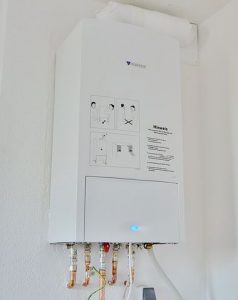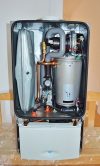Gas hot water cylinder has become common place among households around the developed world. However they are often overlooked, with many people not fully understanding the importance of them and the integral role they play in the modern household.
What is their function?
Gas hot water cylinders primarily provide the supply of heated H20 to a houses taps and plumping fixtures. Without such a system people would have to do this manually, anytime they wanted to bath, wash their hands or cook. They thus function as an extremely useful and fundamental part of the modern household in the twenty first century.

What makes a high quality hot water cylinder?
While, no homeowner wants to live without such amenities, some systems are better than others. Features and specifications that determine a quality system are the following:
Liquid usage levels:
A key feature of a quality system is its ability to manage and use natural resources sustainably and efficiently. Choosing a system of the right size and output can help to manage the amount of waste attributed to a household.
Energy usage:
Hot water cylinders use energy to create heat, how efficiently it uses this energy is a major determinant of a systems quality. With the growth of climate change awareness and the increased emphasis on household sustainability, conserving energy is more important than ever. One of the ways a household can conserve large amounts of energy is by switching to an efficient high quality heating system.
Heating speed:
While many homeowners will consider energy and resource sustainability important features when choosing a hot water cylinder, almost all will agree that the speed and consistency at which it operates is of the highest importance.
If a system is slow or inconsistent a homeowner’s life can be greatly inconvenienced, especially considering the amount of times throughout the day such a system is used. Its use stretches across a vast amount of human activity, anything from bathing, to cleaning to cooking.
What are the varieties and options available?
Hot water cylinders can have a variety of different features, specifications and mechanisms. They can be powered through a variety of different means and come in a wide range of costs. Below are some of the varieties to consider:
- Heat pump systems: these systems draw on heat from the surrounding environment in order to heat the contents of the tank. Electricity is not used to directly heat the contents of the hot water cylinder but is rather used to run the much less demanding compressor.
- Natural gas power: these systems generate less greenhouse gasses than traditional electric systems. They burn natural gas to heat the tanks contents, a much more efficient fuel than coal which is used to create electric heat.
- Solar systems: these use mounted rooftop panels to draw energy from the sun to heat the liquids inside the tank. The effectiveness of these systems is largely dependent on the household’s climate and weather conditions. They can however provide up to 90% of your heat for free with zero emissions.
- Electric heating: The use of electricity to power hot water cylinders is very similar to that of a traditional kettle. The contents of the tank are heated by a physical element inside. These systems however are highly demanding on both the wallet of the homeowner, as they are expensive to run and the environment.
They are the least efficient variety of systems available as many households use oversized tanks in order to ensure they do not run out. Electric systems are however the cheapest to buy up front but may end up costing the most in the long run as especially as power prices grow.
